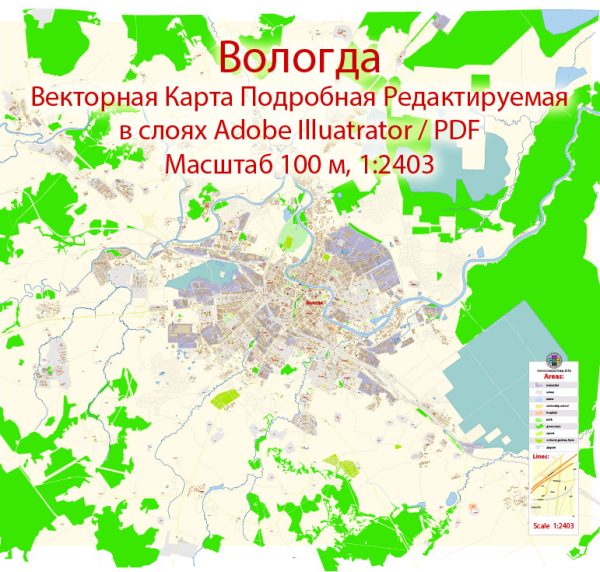Vologda, located in the northwestern part of Russia, is a city with a rich history that spans several centuries. Here’s an overview of key phases in the history of Vologda’s urban development:
Medieval Period:
- Foundation (12th Century):
- Vologda was founded in the 12th century as a fortress and trading outpost. Its strategic location along the Vologda River contributed to its early economic significance.
- Trade and Craftsmanship:
- By the 16th century, Vologda had developed into a major trade and craftsmanship center. It was known for its production of textiles, metalwork, and leather goods.
Tsarist Russia:
- Architectural Heritage (16th-17th Centuries):
- Vologda boasts a wealth of architectural heritage from the 16th and 17th centuries. Notable structures include the St. Sophia Cathedral, which dates back to the 16th century.
- Role in the Time of Troubles:
- During the Time of Troubles (early 17th century), Vologda played a role in the political turmoil affecting Russia. The city supported the Romanovs in their bid for power.
Imperial Era:
- Trade and Commerce (18th-19th Centuries):
- In the 18th and 19th centuries, Vologda continued to be a center for trade and commerce. The city’s merchants were involved in long-distance trade, contributing to its economic prosperity.
- Trans-Siberian Railway (1898):
- The construction of the Trans-Siberian Railway in the late 19th century had a significant impact on Vologda, improving transportation links and facilitating economic connections.
Soviet Period:
- Industrialization and Soviet Changes:
- The Soviet era brought industrialization to Vologda. New industries were established, and the city underwent changes in its urban structure and infrastructure.
- World War II (1941-1945):
- Vologda, like many Russian cities, faced challenges during World War II. Efforts were made to support the war effort, and the city contributed to the overall resilience of the Soviet Union.
Post-Soviet Era:
- Economic Transition (1991 onwards):
- With the dissolution of the Soviet Union in 1991, Vologda, like other Russian cities, experienced economic transitions. The shift towards a market economy presented both challenges and opportunities.
Contemporary Vologda:
- Historic Preservation:
- Vologda has made efforts to preserve its historical architecture. The city center features well-preserved wooden and stone buildings, creating a unique and charming atmosphere.
- Cultural Heritage:
- Vologda is known for its cultural heritage, including traditional crafts such as lace making. The city hosts festivals and events celebrating its cultural identity.
- Educational and Cultural Institutions:
- The city is home to educational institutions and cultural organizations contributing to its intellectual and artistic life.
- Tourism:
- Vologda has become a destination for cultural tourism. Visitors are drawn to its historical sites, museums, and the picturesque landscapes surrounding the city.
- Infrastructure Development:
- Ongoing infrastructure development projects aim to enhance the city’s connectivity and modernize its urban facilities.
Vologda’s history reflects its enduring role as a center of trade and craftsmanship, its architectural heritage, and its ability to adapt to the changing economic and political landscapes over the centuries. Today, Vologda stands as a blend of historical charm and contemporary aspirations.


 Author: Kirill Shrayber, Ph.D.
Author: Kirill Shrayber, Ph.D.